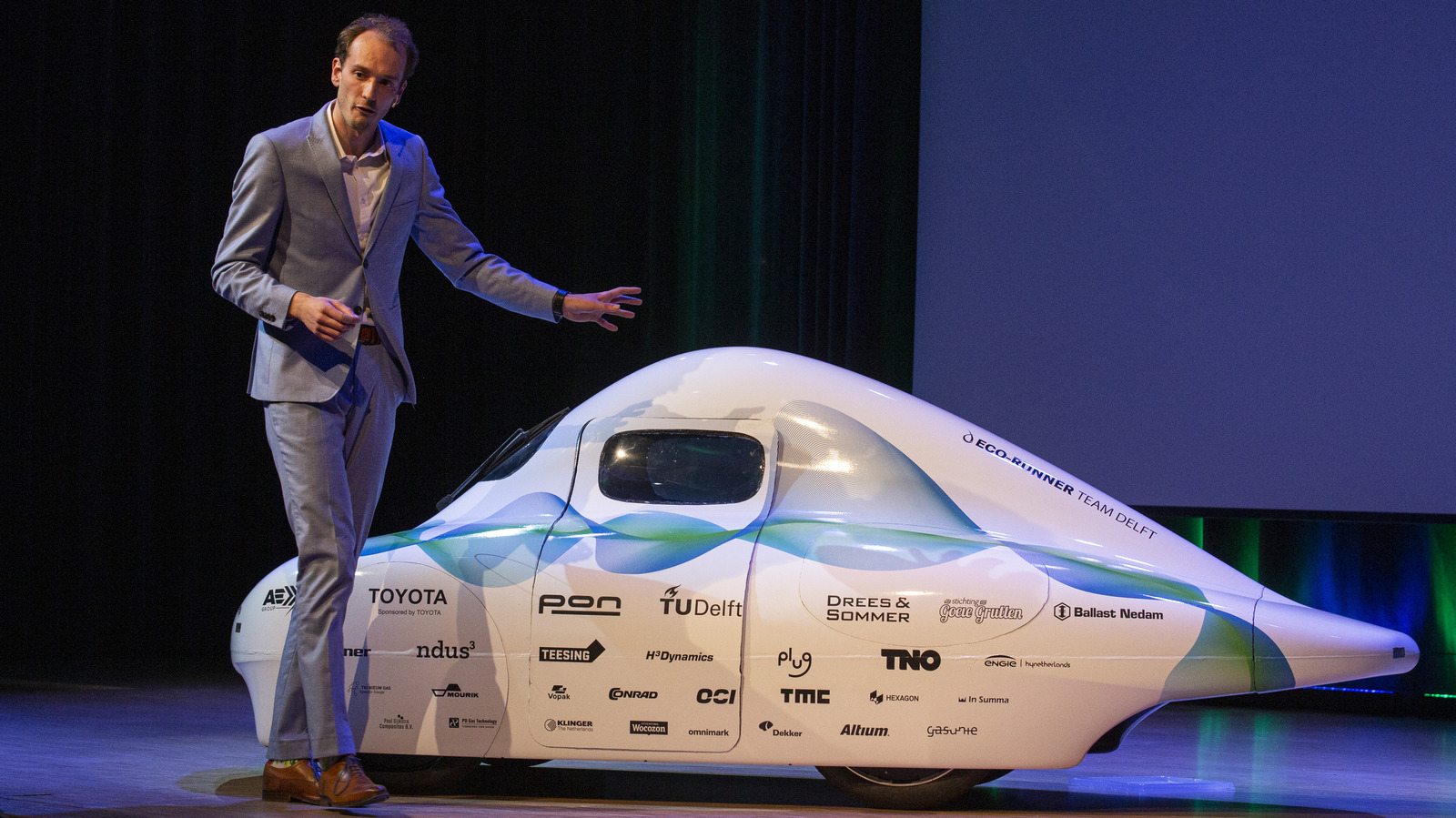Will Hydrogen Powered Cars Ever Surpass Battery-Electric Vehicles, Or Are They Doomed To Fail? – SlashGear
Will Hydrogen Powered Cars Ever Surpass Battery-Electric Vehicles, Or Are They Doomed To Fail? SlashGear


Benefits of Hydrogen and Battery Electric Vehicles (BEVs)

Both batteries and hydrogen are seen as proving the benefit of cleaner energy, but the one area where Mears says BEVs are lacking is in the batteries themselves. A combination of the materials needed to manufacture them and how complicated they can be to recycle, the weight they add to a vehicle, and a comparably limited range put them behind hydrogen in that regard. From a consumer standpoint, it’s got more to do with the charging time — because as Mears points out, “Hydrogen already has a head start benefit of almost instant refueling at a stop as compared with even high-power supercharging of BEVs.”
Advancements in BEV Technology
That said, BEV technology has continued to change and grow. To the point that Professor Mears doesn’t believe hydrogen will have that charging speed advantage for much longer. “…there are a lot of smart people working on these issues, and I expect to see a disruptive battery technology hit the market in the next 5 years that may change the segmentation rapidly,” Mears says.
Infrastructure Considerations
Infrastructure is also a major factor to consider, and while the Federal government does offer a hydrogen hub program, it’s also investing in electrical charging with the DOE’s National Electric Vehicle Infrastructure (NEVI) program. Professor Mears points out that, despite the roughly $5 billion in funding going to a BEV charging network, “whether the national grid system can handle it is another concern.”
SDGs, Targets, and Indicators
| SDGs | Targets | Indicators |
|---|---|---|
| SDG 7: Affordable and Clean Energy | Target 7.2: Increase the share of renewable energy in the global energy mix | Indicator 7.2.1: Renewable energy share in the total final energy consumption |
| SDG 9: Industry, Innovation, and Infrastructure | Target 9.4: Upgrade infrastructure and retrofit industries to make them sustainable | Indicator 9.4.1: CO2 emissions per unit of value added in manufacturing industries |
| SDG 11: Sustainable Cities and Communities | Target 11.2: Provide access to safe, affordable, accessible, and sustainable transport systems for all | Indicator 11.2.1: Proportion of population that has convenient access to public transport |
1. Which SDGs are addressed or connected to the issues highlighted in the article?
The issues highlighted in the article are connected to SDG 7 (Affordable and Clean Energy), SDG 9 (Industry, Innovation, and Infrastructure), and SDG 11 (Sustainable Cities and Communities).
2. What specific targets under those SDGs can be identified based on the article’s content?
Based on the article’s content, the specific targets that can be identified are:
– Target 7.2: Increase the share of renewable energy in the global energy mix.
– Target 9.4: Upgrade infrastructure and retrofit industries to make them sustainable.
– Target 11.2: Provide access to safe, affordable, accessible, and sustainable transport systems for all.
3. Are there any indicators mentioned or implied in the article that can be used to measure progress towards the identified targets?
Yes, there are indicators mentioned or implied in the article that can be used to measure progress towards the identified targets. These indicators are:
– Indicator 7.2.1: Renewable energy share in the total final energy consumption.
– Indicator 9.4.1: CO2 emissions per unit of value added in manufacturing industries.
– Indicator 11.2.1: Proportion of population that has convenient access to public transport.
The article discusses the benefits of hydrogen as a cleaner energy source compared to batteries. This relates to SDG 7, which aims to promote affordable and clean energy. The article also mentions the need to upgrade infrastructure for sustainable industries, which aligns with SDG 9. Additionally, the article highlights the importance of providing access to sustainable transport systems, which falls under SDG 11.
The specific targets identified are based on the issues discussed in the article. The targets focus on increasing the share of renewable energy, upgrading infrastructure for sustainability, and providing access to sustainable transport systems.
The indicators mentioned or implied in the article can be used to measure progress towards the identified targets. Indicator 7.2.1 measures the renewable energy share in the total final energy consumption, indicating progress towards increasing the share of renewable energy. Indicator 9.4.1 measures CO2 emissions per unit of value added in manufacturing industries, which can be used to assess progress in upgrading infrastructure for sustainability. Indicator 11.2.1 measures the proportion of the population that has convenient access to public transport, indicating progress in providing access to sustainable transport systems.
Behold! This splendid article springs forth from the wellspring of knowledge, shaped by a wondrous proprietary AI technology that delved into a vast ocean of data, illuminating the path towards the Sustainable Development Goals. Remember that all rights are reserved by SDG Investors LLC, empowering us to champion progress together.
Source: slashgear.com

Join us, as fellow seekers of change, on a transformative journey at https://sdgtalks.ai/welcome, where you can become a member and actively contribute to shaping a brighter future.







